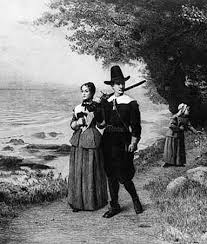 |
Craig White's Literature Courses
Mexican Americans as related terms and sites: mestizo, race / ethnicity |
 |
American speech may refer to Mexican Americans as either immigrant or minority without making our course's distinctions between these terms.
In this case everyone may be right, as Mexican Americans in the USA may combine immigrant and minority narratives or identities, or they develop a new type of ethnic identity that exceeds or varies these familiar divisions.
Mexican Americans as immigrants
Popular American culture and media see Mexican Americans as immigrants through discussion of border security, documentation issues, demographics, and potential political impacts.
Justification of Mexican Americans as immigrants:
![]() For
centuries Mexican
people have continually crossed and recrossed a shifting border between Mexico
and the USA.
For
centuries Mexican
people have continually crossed and recrossed a shifting border between Mexico
and the USA.
![]() Mexican
immigrants make up the largest group of current immigrants to America (though
current rates of Asian immigration are higher).
Mexican
immigrants make up the largest group of current immigrants to America (though
current rates of Asian immigration are higher).
![]() Mexican
Americans face many challenges similar to other
immigrant groups, e.g. assimilation to a new
language and culture, generational change, availability of well-funded public schools, culture shock,
nostalgia, etc.
Mexican
Americans face many challenges similar to other
immigrant groups, e.g. assimilation to a new
language and culture, generational change, availability of well-funded public schools, culture shock,
nostalgia, etc.
![]()
Mexican Americans as minorities
![]() Mexican
Americans in the Southwestern U.S. were once conquered and dispossessed like
American Indians and are thus a
minority, so that
Mexican
Americans in the Southwestern U.S. were once conquered and dispossessed like
American Indians and are thus a
minority, so that
![]() When Mexican Americans immigrate to states like Texas, California, Arizona, New
Mexico and Nevada, their identity as immigrants is complicated by the fact that
these lands once belonged to Mexico. (See
Mexican-American War, 1846-48)
When Mexican Americans immigrate to states like Texas, California, Arizona, New
Mexico and Nevada, their identity as immigrants is complicated by the fact that
these lands once belonged to Mexico. (See
Mexican-American War, 1846-48)
![]() The nearness of the Mexican border with the United States may mean less
detachment from their home country for Mexican Americans, potentially leading to
mixed attitudes toward assimilation.
The nearness of the Mexican border with the United States may mean less
detachment from their home country for Mexican Americans, potentially leading to
mixed attitudes toward assimilation.
![]() Proximity to the USA has exposed Mexican Americans, like other
New World immigrants, to political, economic,
and cultural aspects of American society making them careful of negatively
assimilating to family breakdown, women's
rights, etc., in addition to American military aggression and cultural and
economic imperialism.
Proximity to the USA has exposed Mexican Americans, like other
New World immigrants, to political, economic,
and cultural aspects of American society making them careful of negatively
assimilating to family breakdown, women's
rights, etc., in addition to American military aggression and cultural and
economic imperialism.
![]() Traditional extended families (often
fragmented or dysfunctional) with traditional gender roles are more common in
minorities than in dominant culture. Brevity of childhood, beginning work early to
support family, and early child-bearing ("age at first birth") are contrary to
the American
dominant culture's extended childhoods, but this may result from class more
than ethnicity.
Traditional extended families (often
fragmented or dysfunctional) with traditional gender roles are more common in
minorities than in dominant culture. Brevity of childhood, beginning work early to
support family, and early child-bearing ("age at first birth") are contrary to
the American
dominant culture's extended childhoods, but this may result from class more
than ethnicity.
![]() Family breakdown may be intensified by government immigration
regulations that separate families, resembling family disruptions
suffered by American Indians (boarding schools, forced migration) and African
Americans (families separated by slave market and for dehumanizing purposes).
Family breakdown may be intensified by government immigration
regulations that separate families, resembling family disruptions
suffered by American Indians (boarding schools, forced migration) and African
Americans (families separated by slave market and for dehumanizing purposes).
![]() If
minority identity in the USA is primarily symbolized
by the color code of black =
minority and
white = dominant, Mexican Americans fall
mostly in-between as brown.
If
minority identity in the USA is primarily symbolized
by the color code of black =
minority and
white = dominant, Mexican Americans fall
mostly in-between as brown.
![]() Different dominant-culture settlement patterns led to greater rates of
intermarriage in Mexico and other Latino states between whites and people of
color. (See mestizo.) Thus Mexican Americans may be
minority in a
genetic sense.
Different dominant-culture settlement patterns led to greater rates of
intermarriage in Mexico and other Latino states between whites and people of
color. (See mestizo.) Thus Mexican Americans may be
minority in a
genetic sense.
![]() Since American society distinguishes "minorities" by "race," Mexican Americans
and other Hispanics / Latinos further frustrate familiar black-white or
dark-light divisions for
minority & dominant
cultures. Mexican Americans may be any color or appearance, though the variable
mestizo mix of European and Indian is most
familiar.
Since American society distinguishes "minorities" by "race," Mexican Americans
and other Hispanics / Latinos further frustrate familiar black-white or
dark-light divisions for
minority & dominant
cultures. Mexican Americans may be any color or appearance, though the variable
mestizo mix of European and Indian is most
familiar.
![]()
Distinct historical backgrounds of North American and Central American immigration.
The materials below partly describe how Mexican Americans are neither simply immigrant or minority but something different that is still evolving in culture and consciousness.
Mexican Americans combine cultural features that may align with minority or immigrant identity, but these features vary geographically, by class, and by history.
|
|
|
 |
 thanks to http://www.u-s-history.com/pages/h1148.html |
|
|
|
Distinct racial relations and attitudes result.
|
|
|
USA as black-and-white thanks to https://www.youtube.com/watch?v=uebkBveRugE |
Latin America as spectrum centered on brown thanks to http://www.thejuryexpert.com/2010/07/the-convoluted-spectrum -of-white-guilt-reactions-a-review-of-emerging-literature/ |
Different migration patterns.
|
|
|
 thanks to http://www.solpass.org/6ss/Standards/standard_us1.8a.htm |
 thanks to http://thegeographyofblackwood.blogspot.com/2009/01/migration.html |
Mexican Americans as minority in USA:
Historical: Conquest and annexation by the United States of Mexican territory in 1800s is historically analogous to conquest of American Indian lands in earlier centuries. (Involuntary contact with dominant culture)
(+ Minority status in Central America: American Indians were often enslaved or otherwise exploited by Spanish colonizers.)
Racial / ethnic mix: Partial American Indian descent of many Mexican Americans associates them with American Indian minority status.
Color code: variation from "white = good" can cause negative stereotyping.
Traditional extended families (however fragmented or dysfunctional) with traditional gender roles are more common in minorities than in dominant culture. (tradition / modernity)
Brevity of childhood, beginning work early to support family, and early child-bearing ("age at first birth") are contrary to dominant culture's extended childhoods, but this may result from class more than ethnicity.
Gender inequality reinforced by Spanish conquest: Since the model of mestizo marriage was Male Conquistador + Female Indian, standard gender inequalities are reinforced by racial or ethnic inequalities, creating "double minority" status.
Mexican Americans as immigrants to USA:
Historical: Since most of "New Spain" became part of the USA, Mexican immigration to former parts of Mexico and other parts of the USA has taken place in several waves, responding to unrest in Mexico:
![]() Mexican Revolution of the 1910s
Mexican Revolution of the 1910s
![]() Mexican debt
crisis of the 1980s-90s
Mexican debt
crisis of the 1980s-90s
![]() NAFTA in 1990s
NAFTA in 1990s
![]() need for cheap manual labor in the
USA, especially during war-time (e.g. Bracero program during WW2).
need for cheap manual labor in the
USA, especially during war-time (e.g. Bracero program during WW2).
Racial / ethnic: mestizo identity connects not only with minority Indian but also with dominant-culture European identity.
Intermarriage is a primary driver of assimilation. Since intermarriage is inherent in the Mexican American or mestizo identity, Mexican Americans appear to adapt easily to intermarriage with other ethnic groups within the USA.
Wild card: Mexican Americans are unique among immigrants
because of proximity to homeland, shifting border, cultural contact




